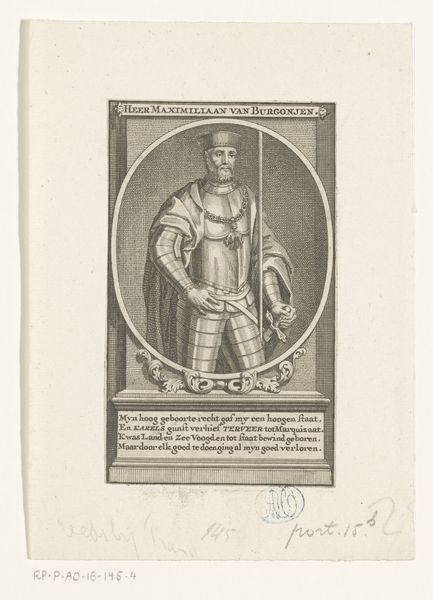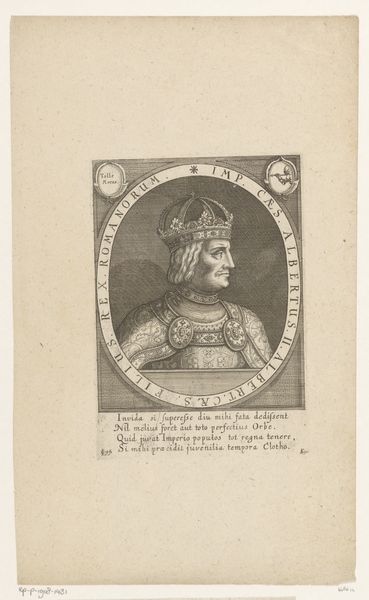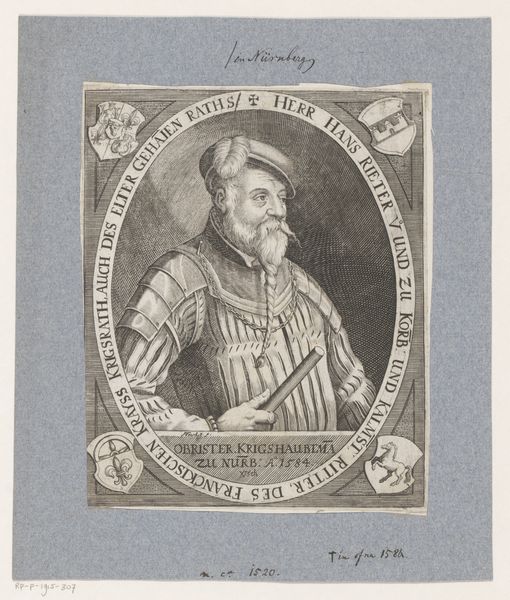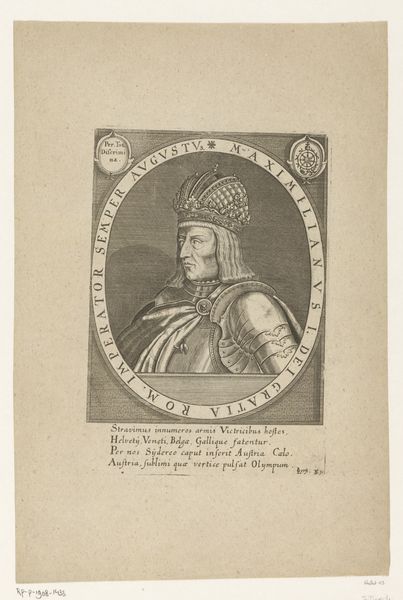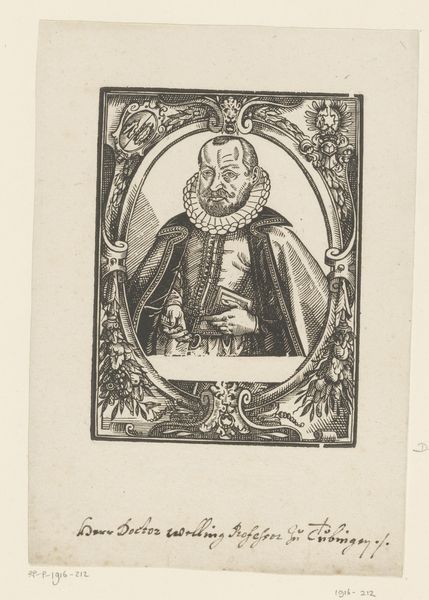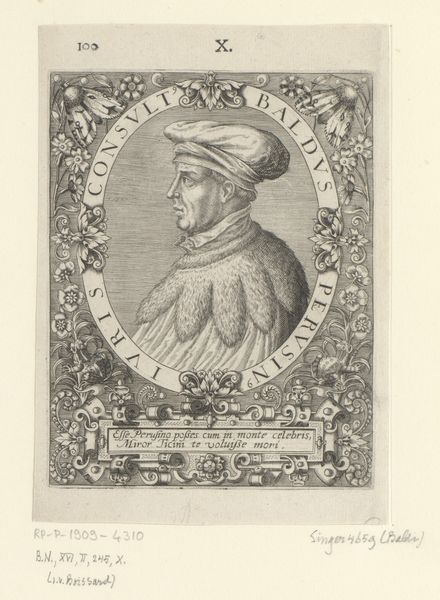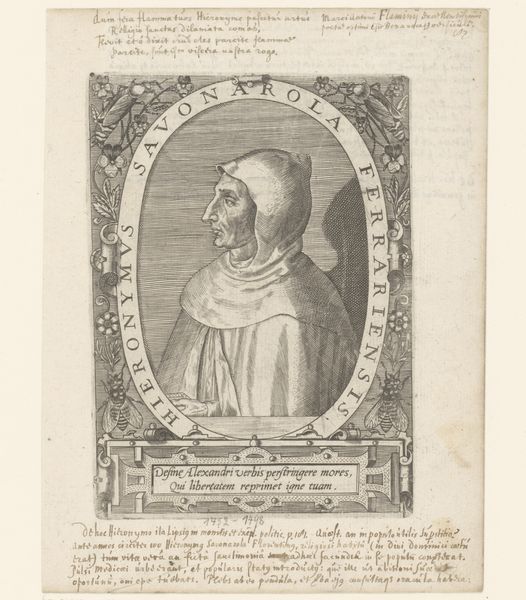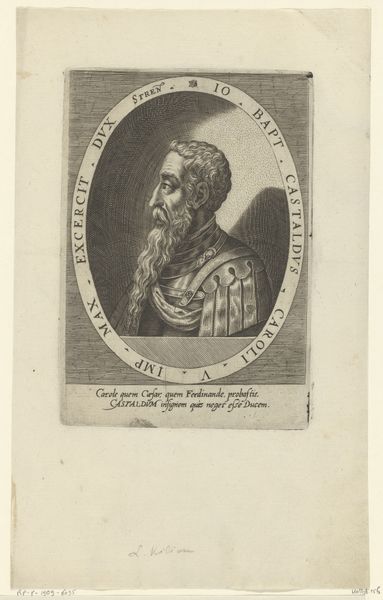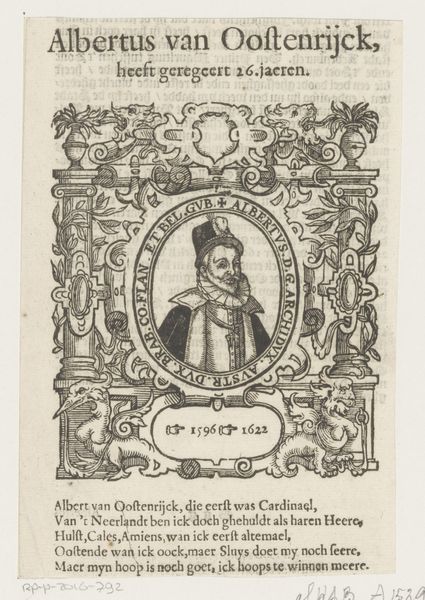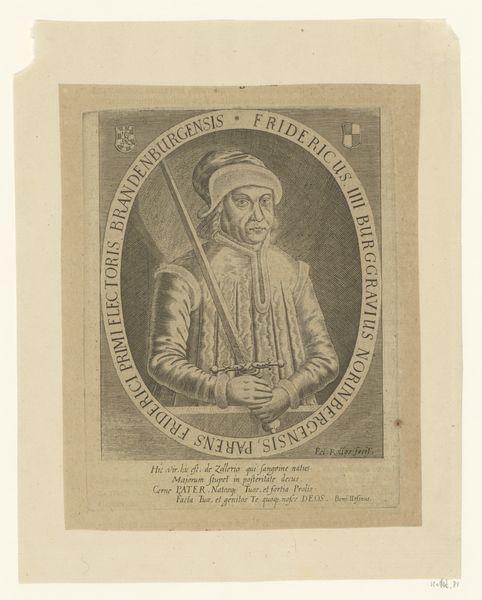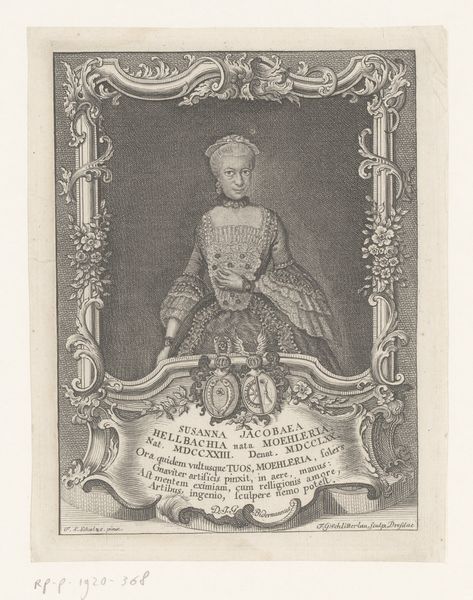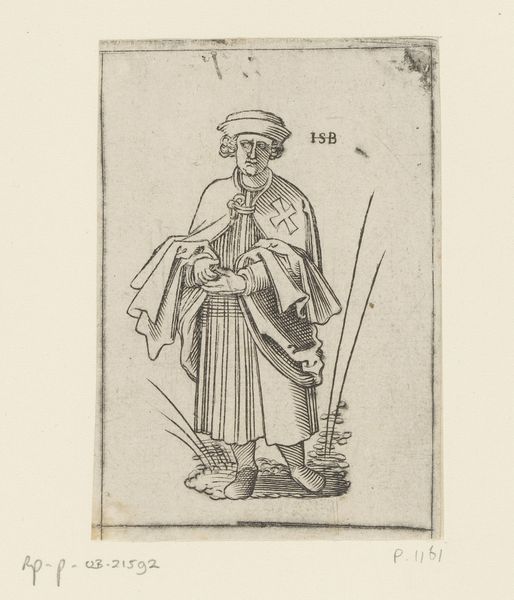
Dimensions: height 187 mm, width 142 mm
Copyright: Rijks Museum: Open Domain
Curator: Let's turn our attention to this portrait of Johann Cicero of Brandenburg, a print made between 1625 and 1626 by Peter (I) Rollos. Editor: My first impression is a sense of contained power. The subject is elaborately dressed but enclosed within this oval frame. It's visually arresting and feels slightly claustrophobic, actually. Curator: Indeed. The engraving technique, a common medium of the time, allowed for the detailed rendering of Johann Cicero's garments and facial features, showcasing his status and nobility within the political structures of 17th-century Brandenburg. Look closely at how the text is arranged, almost like a frame for the portrait itself; these are all carefully constructed displays of power. Editor: Yes, that elaborate framing, combined with the heavy, ornate details, speaks volumes about the performative aspects of power. Who was Johann Cicero trying to project himself to be through this image, and for whom? The inclusion of his family name so prominently suggests this image serves as an assertion of dynastic legitimacy. Curator: Precisely! Consider also the tradition of portraiture in solidifying aristocratic identity and propagating power across generations. By commissioning this portrait, Johann Cicero not only commemorates himself but actively participates in building the historical narrative surrounding his lineage. The very act of disseminating images like this becomes a tool for maintaining authority. Editor: Thinking about access to imagery at the time is vital too. Who had access to see this engraving? Was this designed for public consumption, or circulated only amongst a certain elite class? These material conditions shape the impact this artwork had and continues to have. Curator: An astute observation. Prints were more accessible than painted portraits, but still circulated amongst a relatively literate and affluent segment of society. Its impact reverberates through the print’s ability to disseminate particular visual codes and social values concerning leadership and power to those who had the means and knowledge to comprehend the meaning embedded within the portrait. Editor: For me, this image is a potent reminder that visual representation is always enmeshed with historical narratives and ideological assertions. By studying artworks like this, we begin to decipher the strategies people use to manufacture and safeguard political capital, prestige, and privilege. Curator: A valuable perspective. The work highlights the enduring human impulse to represent ourselves and the world, particularly within frameworks of authority. It really illustrates how images play an integral part in shaping public life.
Comments
No comments
Be the first to comment and join the conversation on the ultimate creative platform.
